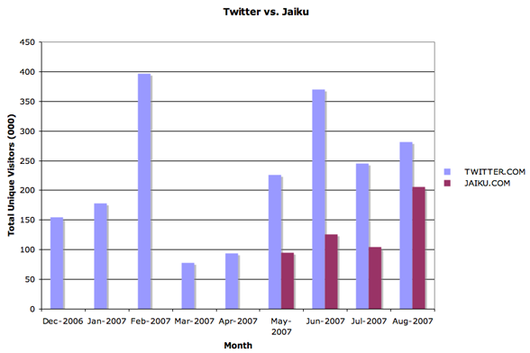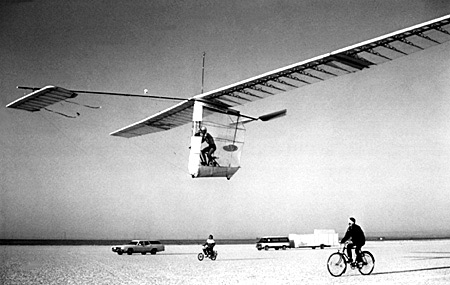“Jaiku was not much more than a year old when we were acquired. It was like hitching a ride on a firecracker!” says Jyri Engeström, co-founder of Jaiku.
“I poured my heart and soul into designing the service with our small team,” he says of the microblogging tool similar to Twitter. “As a sociologist I was convinced microblogging had the power to change society (see Egypt) — and I thought we would keep building the company for a long time. But we didn’t anticipate usage would explode so fast. Our back end had scaling issues, and our mobile client was for Nokia’s Symbian phones, which turned out to be an impossible platform to develop for.”
 So in October 2007, Jaiku agreed to a sale to Google (rumored purchase price: $12 million).
So in October 2007, Jaiku agreed to a sale to Google (rumored purchase price: $12 million).
At the time, Engeström (right) and co-founder Petteri Koponen wrote, “Our engineers are excited to be working together [with Google] and enthusiastic developers lead to great innovation. We look forward to accomplishing great things together.” Google Product Manager Tony Hsieh wrote, “We’re excited about helping drive the next round of developments in web and mobile technology.”
A time of excitement
Looking back, Engeström remembers the excitement of those days. “We joined Google with the assumption we’d build a new, more scalable service that would be tightly integrated with a small project called Android, which I thought was the best thing to happen to the mobile industry and was led by Andy Rubin, who had the cojones to take over the world,” he says.
“At the time, most people still thought microblogging was a passing trend: superfluous status messages a small population of geeks texted to each other on their Sidekicks and Treos. I was convinced microblogging was the defining social innovation of the decade, and that it would become ubiquitous with the oncoming age of smartphones; so it was exciting to think we could leapfrog to a completely different scale and have Google’s near-infinite engineering resources behind us to meet the exploding demand.”

Unique visitors at Twitter and Jaiku back in 2007. (Source: VentureBeat)
Industry insiders also felt the prospects for the collaboration were bright. RWW’s Marshall Kirkpatrick wrote, “With easy group creation, RSS import and threaded conversation, amongst other features, Jaiku is probably a superior service to Twitter.” A Softpedia piece said, “One thing is sure: the Jaiku products will be improved a lot.” Even Biz Stone, cofounder of Twitter, had kind words for the deal: “Those guys have a keen grasp of mobile, and it’s probably a good fit for whatever Google’s cooking up.”
Closed to new users
But after the purchase, Jaiku was closed to new users and quickly slipped into “the Google black hole,” according to reporter Farhad Manjoo. Three months after the acquisition, signups were still closed. Engeström wrote on the company blog: “To be honest, a lot of our time in the early going was spent on getting to know Google.”
David Lawee, the Google Vice President in charge of acquisitions, told Manjoo that moving a new company onto Google’s systems takes 3-6 months and enables scaling. But problems continued after that time frame for Jaiku. After ten months, Jaiku was still closed to new users and existing users were complaining it was too slow. Engeström responded, “We feel the short term pain, too.” All the while, Twitter was gaining traction.
Then, in January of 2009, Google’s Vic Gundotra announced changes to Jaiku: “We are in the process of porting Jaiku over to Google App Engine. After the migration is complete, we will release the new open source Jaiku Engine project on Google Code under the Apache License. While Google will no longer actively develop the Jaiku codebase, the service itself will live on thanks to a dedicated and passionate volunteer team of Googlers.”
But nothing much really happened after that. The site is still up but its blog hasn’t been updated since 2009. The About page says, “The service is maintained by volunteer Google engineers on their spare time.”
Continued…




